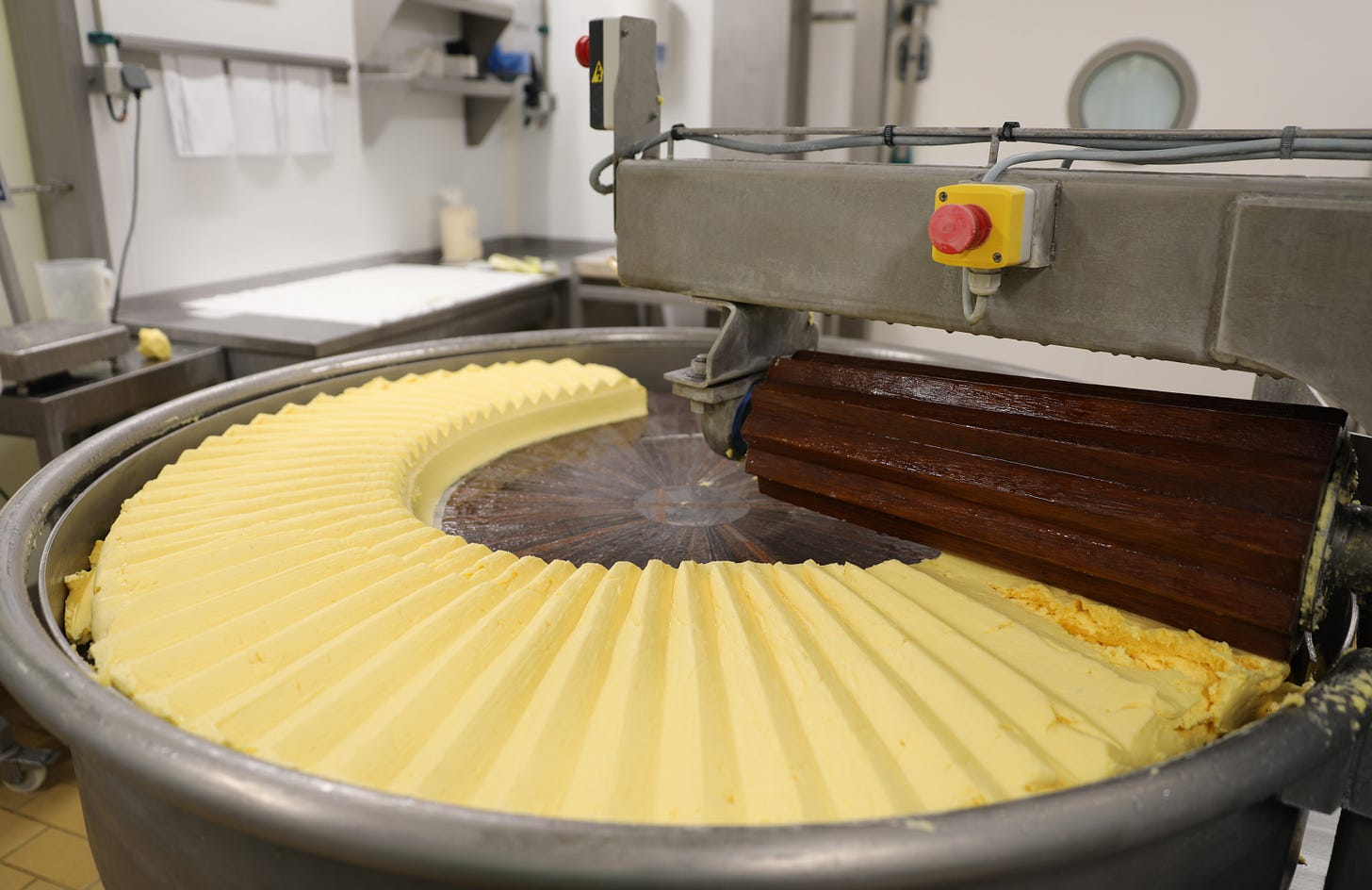Nice Spread: Compound Butter
Le coup de gras
I visited Maison Bordier the other day, widely regarded as the foremost producer of flavored butter in Brittany, if not all of France. Their shop is in the old fortified section of Saint-Malo (known as “Intramuros” because it’s enclosed within seriously gigantic rampart walls). The town is immaculately preserved, though a bit touristy. Worth a visit, though. Buy some butter, eat a galette, walk the ramparts, take a dip if it’s hot out. Like a lot of coastal towns in the area, in response to the cold ocean and strong currents they’ve built a large swimming pool at the ocean’s edge that disappears under the high tide. I visited their factory, which is outside of Rennes, about an hour from Saint-Malo (it’s not open to the public).
Bordier doesn’t make their butter; they buy it in large amounts from trusted organic dairy farmers in the region. What they do is process it through careful kneading and amending with an enticing range of flavorful dried ingredients, including seaweed, truffles, saffron, Roscoff onions, and Espelette pepper (which is wicked). It’s higher in fat than most butter in the U.S., and their process enhances the flavor to pretty insane levels. By all means go buy some and check it out—it’s fabulous. But I want to talk about working that magic in your very own kitchen, without paying to have it shipped a very long way. Breton butter has a few potent lessons for us home cooks.
Keep reading with a 7-day free trial
Subscribe to Things On Bread to keep reading this post and get 7 days of free access to the full post archives.



